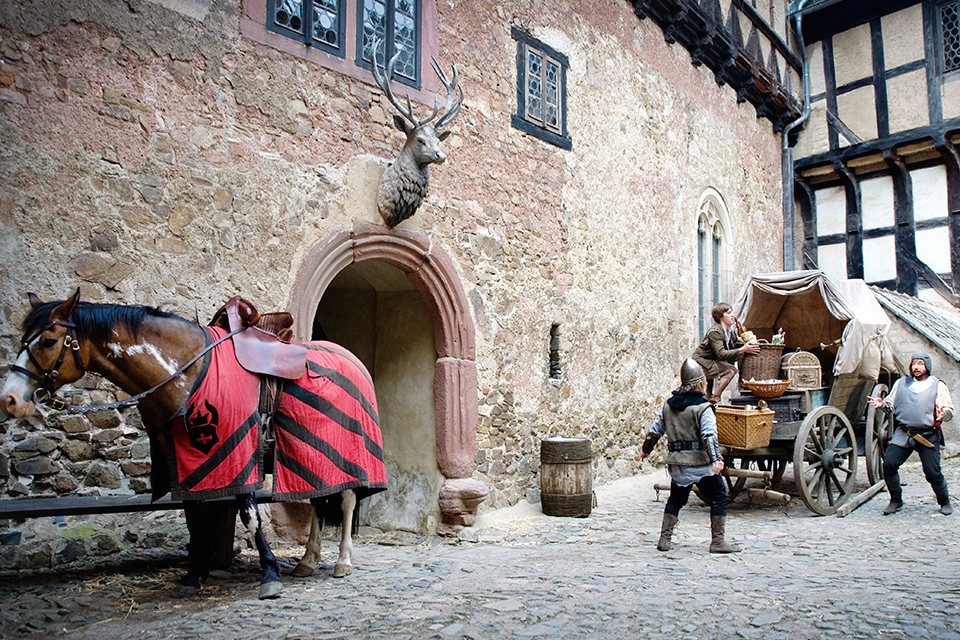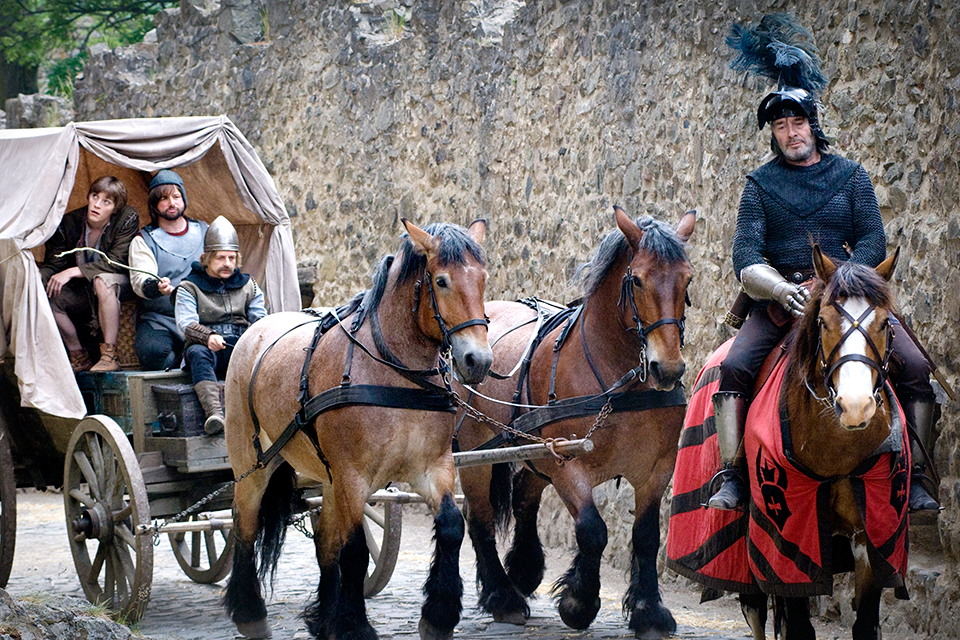Permanent exhibition
In recent years, several rooms at the Falkenstein Castle museum have been elaborately renovated. The exhibition illustrates their historical use, with the items that were kept there.
A modern presentation is dedicated to the history of Falkenstein Castle and its inhabitants, the “Sachsenspiegel” (the most important German-language law book of the Middle Ages) and the castle’s use as an impressive setting for films.
Exhibition spaces
Falkenstein as a residence
Over its 900-year history, Falkenstein Castle has been rebuilt several times, with frequent changes in its use and the structure of its rooms. At the start of the 20th century, Friedrich, Count of Asseburg-Falkenstein had the castle repaired thoroughly.
Under the direction of the cultural foundation Kulturstiftung Sachsen-Anhalt, it was elaborately restored from 1996 on. Most of the rooms are now presented as they were historically used, notably the late Gothic Old Kitchen and the castle chapel with its high mediaeval glass window. The most striking restoration is in the Knight's Hall, where coloured paintwork was revealed from the early 20th century.
The suite in the north wing – the Black Room, Small Salon and Gentlemen’s Drawing Room – was designed in the 19th century in the neo-Gothic style by the Prussian architect Friedrich August Stüler. This phase can be seen today reconstructed in the royal rooms. These were originally provided for the King of Prussia to live in during his visits to Falkenstein.
The foundations of the collection were laid by Count Ludwig I of Asseburg-Falkenstein back in the 19th century. A large part of the interior as presented today comes from the count's palace in nearby Meisdorf and from the castle itself.
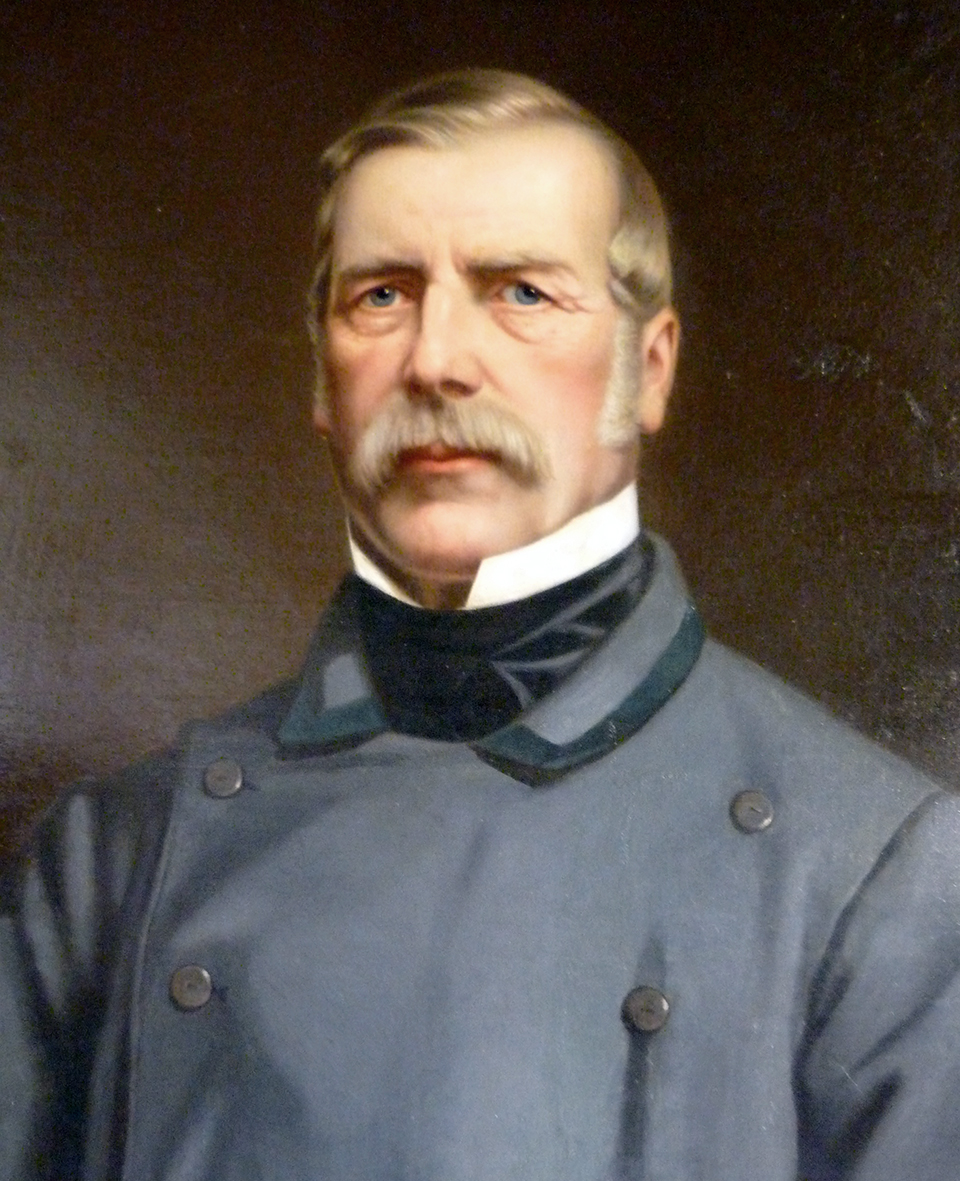
History of the castle and its construction
Falkenstein embodies 900 years of history. During that time, it has seen times of rise and fall. Over the centuries, the castle was adapted to the needs of its inhabitants. This has given it a fascinating variety of architecture, from the Romanesque building fabric to the late Gothic chapel; from the Renaissance to historicism. Solid, rough stone masonry goes hand in hand with half-timbered structures mediaeval circular ramparts are paired with residential buildings from different eras.
Two families shaped this development. In the High Middle Ages, the lords of Konradsburg Castle built the castle, taking a firm grasp on the tiller as the Counts of Falkenstein. In the mid-15th century, the castle fell into the hands of the House of Asseburg. By extending the fortifications and making formative changes, they shaped the image of the castle into that still presented to modern visitors.
This exhibition is dedicated to the eventful history of the complex and its owners. An architects’ model illustrates the final stage of construction in around 1750. The lapidarium displays spolia (repurposed architectural fragments) from across the castle’s history, but the most important item in the collection remains the fascinating complex itself!
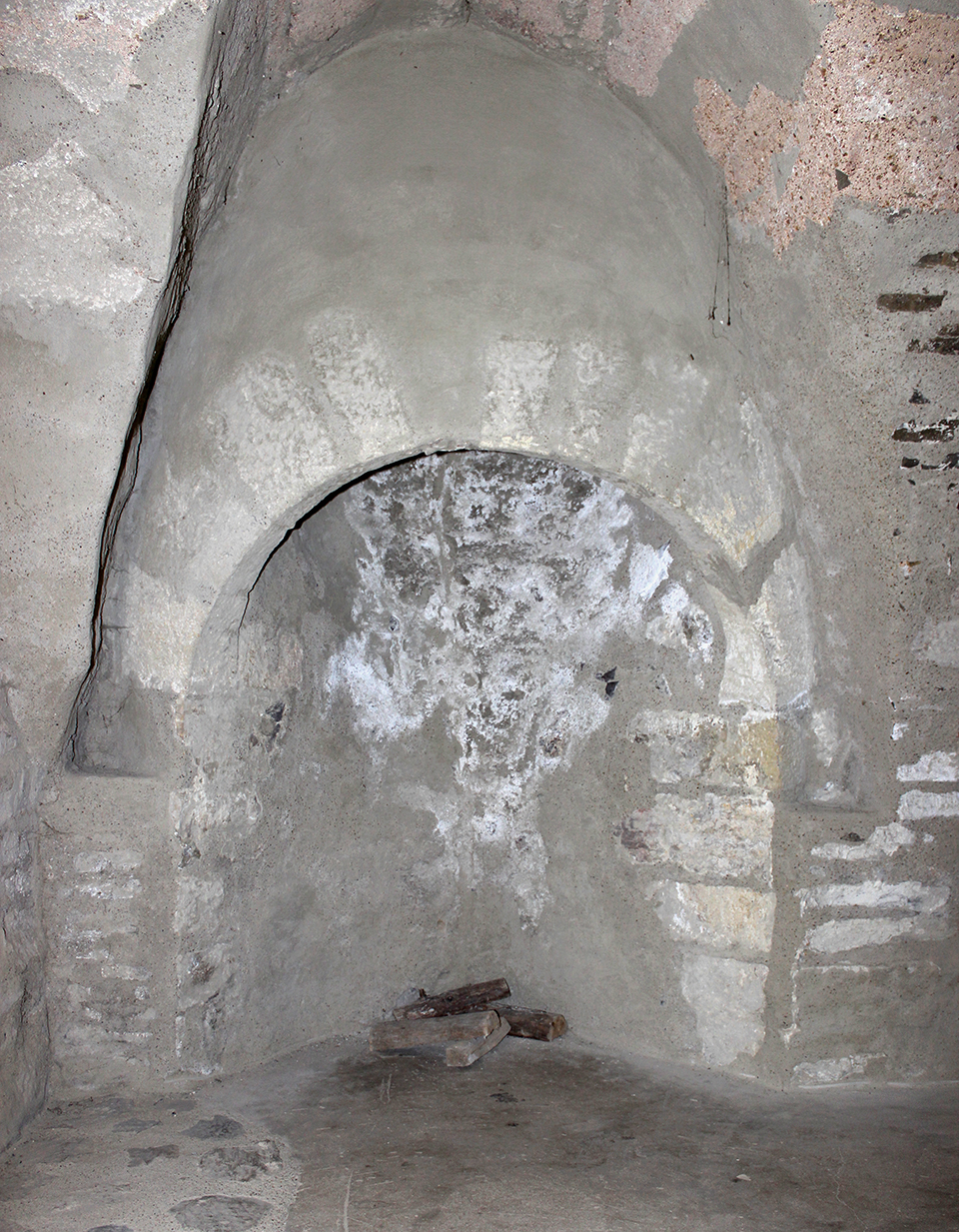
The keep
The approach to Falkenstein Castle makes for a striking image as visitors come up against the 17-metre high, 4-metre thick shield wall, towered over by an unusually shaped keep. The floor plan is drop-shaped. The point faces east, the side where attacks come from. In the courtyard, the construction phases of the keep are clearly visible. In 1592, Augustus I of Asseburg had the tower raised almost another eight metres. This work can be seen from the inscription panel where the mediaeval entrance is thought to have been.
Immediately behind the modern passageway, in the lowest level of the keep, is the “Angstloch”, a kind of access hole. Looking through this opening, you can see the dungeon at the base of the tower. Two of its inmates are known by name: in 1607 it was occupied by Martin Stüler, who murdered his wife, and in 1779 the child murderer Marie Elisabeth Voigtländer awaited her trial there. The arduous climb to the viewing platform some 23 metres above the cobbled castle courtyard is more than compensated for by the fantastic view of the Selke Valley. In good weather you can see as far as the Brocken.
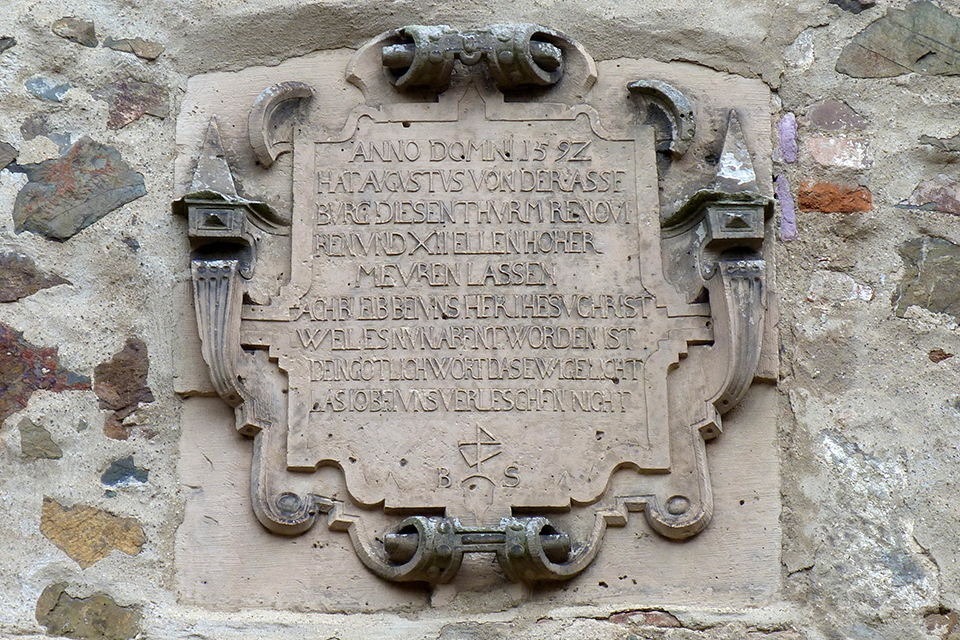
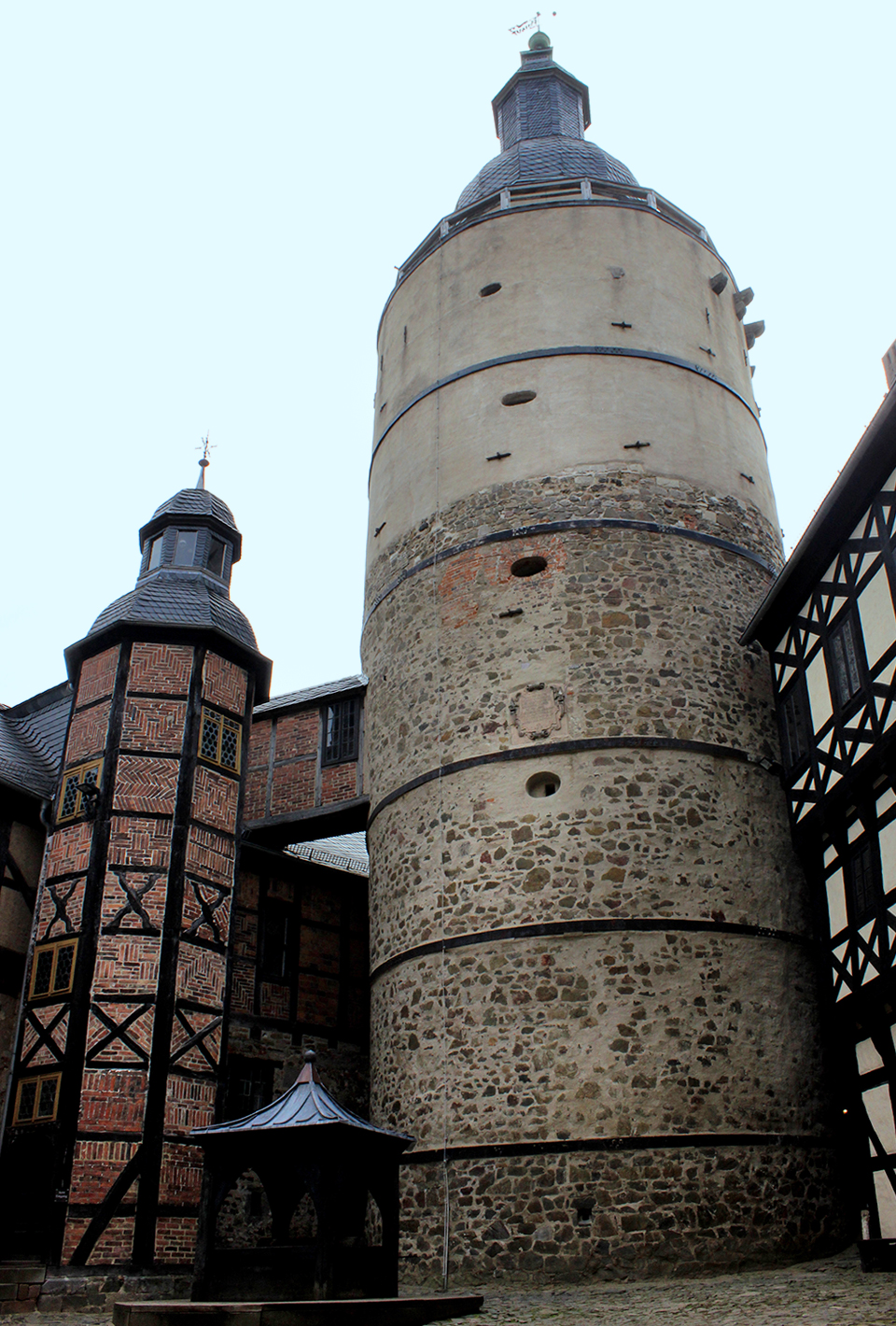
The Sachsenspiegel
Between 1220 and 1235, the most important German-language law book of the Middle Ages was written – the “Sachsenspiegel”. Its story is closely linked to Falkenstein Castle. The preface describes Count Hoyer II of Falkenstein as a patron of the work, and Eike von Repgow as the author:
„Nu danket al gemene | Now let us all together |
The “Sachsenspiegel” is not only a milestone in legal history but also an inexhaustible source for researchers. As well as legal symbols, its four illuminated manuscripts depict numerous everyday objects and circumstances typical of mediaeval times.
For centuries, the book influenced the laws of large parts of central and eastern Europe.
Many of the legal principles from Eike’s days are familiar to us and have found their way into today's understanding of the law. Every home-owner knows that he may not let his rainwater drain onto someone else's land. Everyone knows what happens in disputes over fruit hanging in a neighbour’s garden. The German phrase “wer zuerst kommt, mahlt zuerst!” comes from the “Sachsenspiegel” – “first come, first served”.
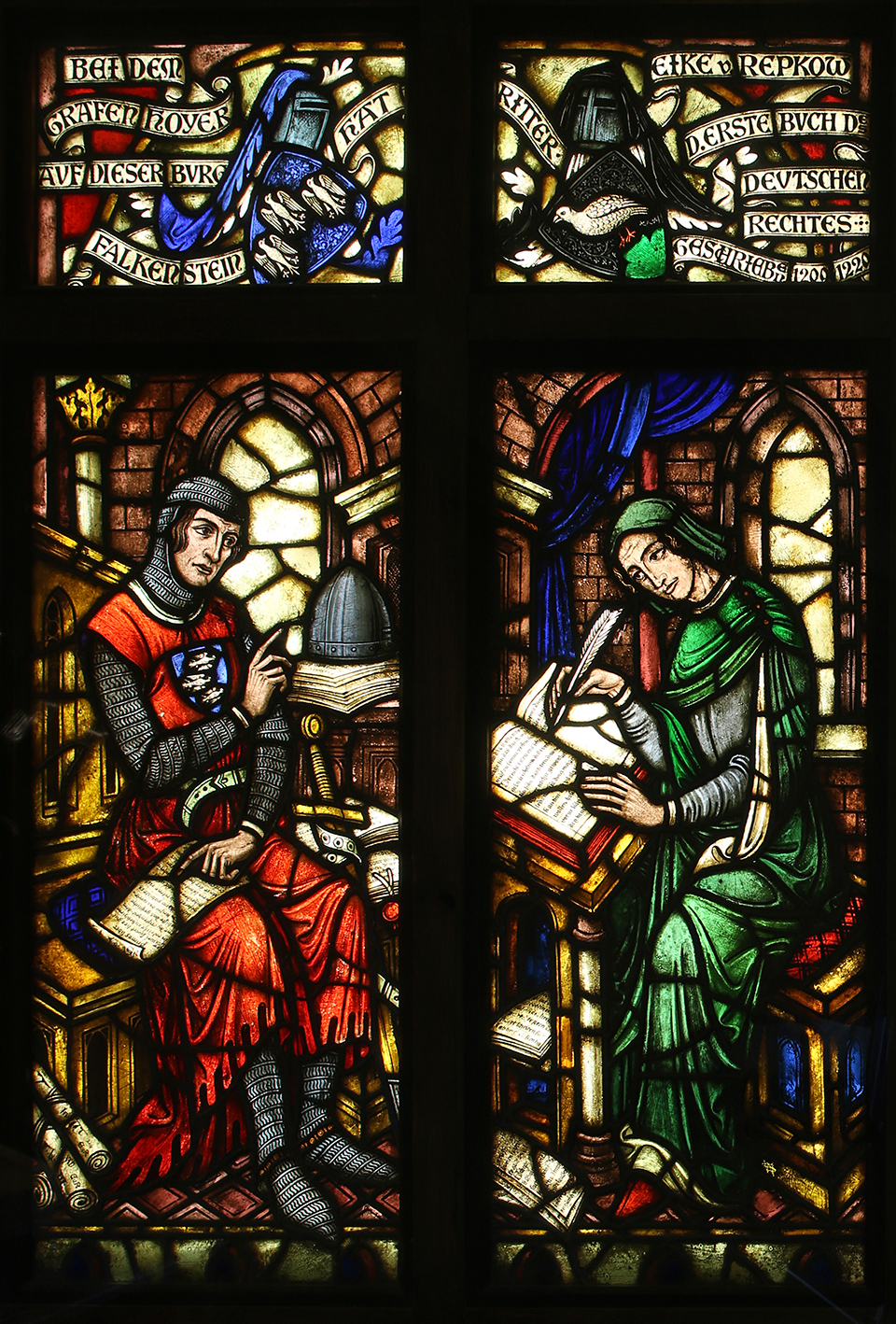
Falkenstein – it’s a wrap!
Special exhibition “Falkenstein as a film setting” (2018–2020)
The picturesque location, original furnishings and excellent state of conservation have always made Falkenstein Castle the perfect spot for a film setting.
The ancient walls played their first major role in 1978 in the popular children's series “Ghosts Beneath the Ferris Wheel”. Later, the forces of evil were successfully conquered time and again in fairy tales such as “Snow White and Rose Red” or “Prince Sky Blue and the Fairy Lupine”. In 2015, Fritz Fuchs and his dog Keks raced along the passageways in “The Ghost of Greifenklau”. The tension mounted in 1980 in the Polizeiruf 110 episode “The Discovery”, and in 2001, Emperor Otto I and Henry IV rode through the mighty gates of Falkenstein in the epic MDR production on the history of Central Germany.
Discover the castle from this very special perspective in a special exhibition! While you browse, young history lovers are transformed into princes and princesses, dwarves and witches in the fairy-tale room and have their own adventures.
And in the vaulted cellar, Rumpelstiltskin tells the story of how he once helped the miller's daughter out of a predicament.
